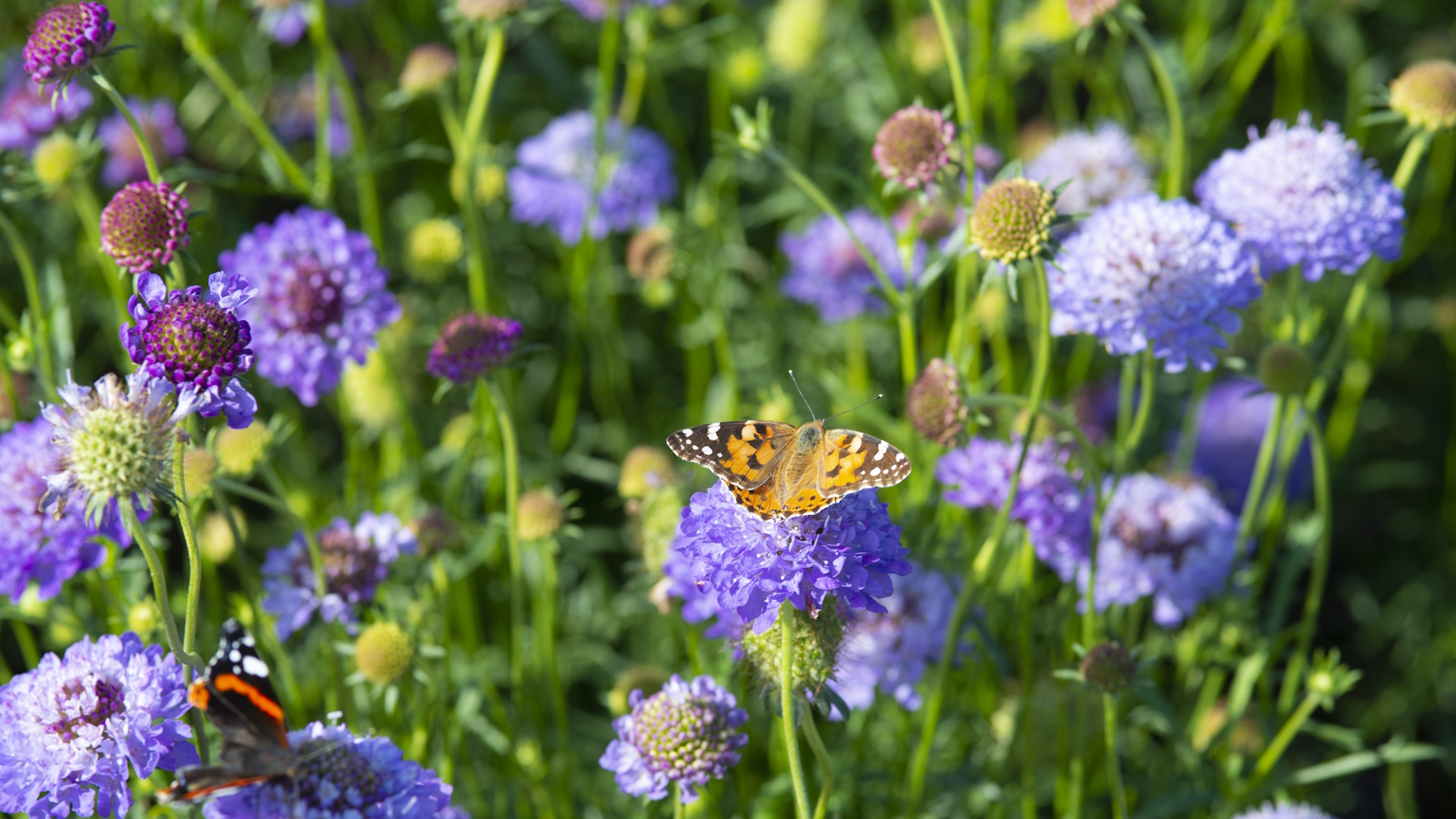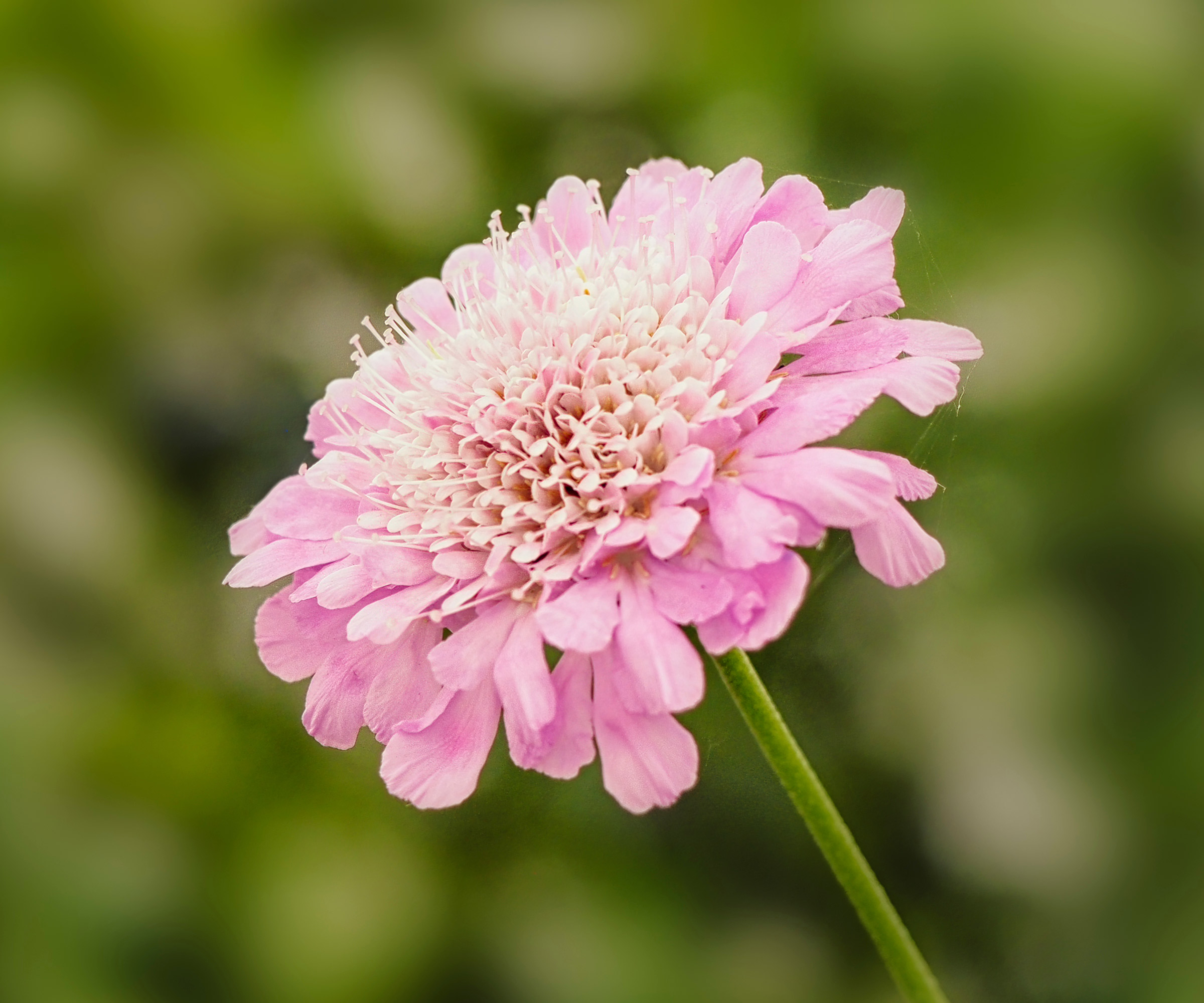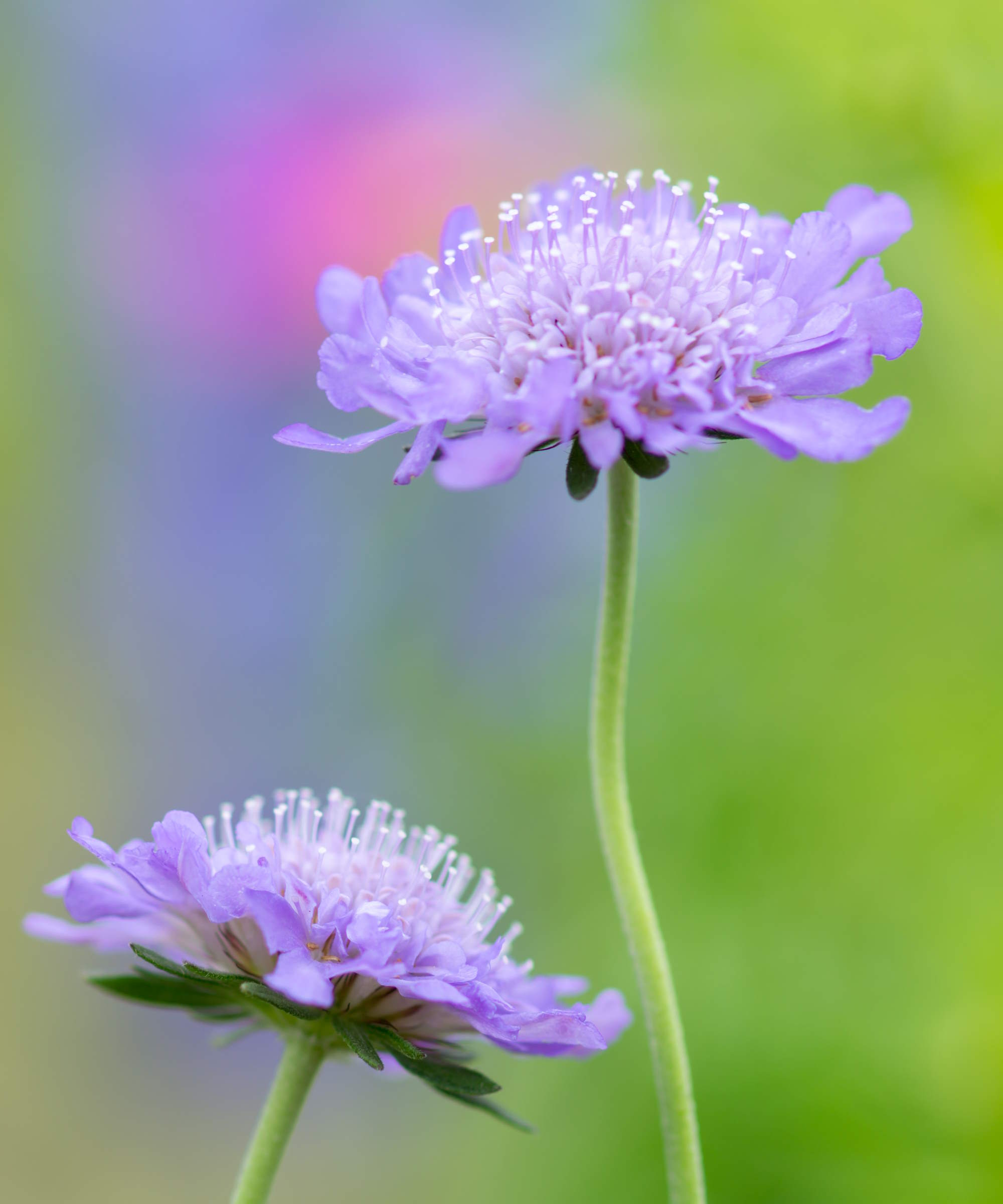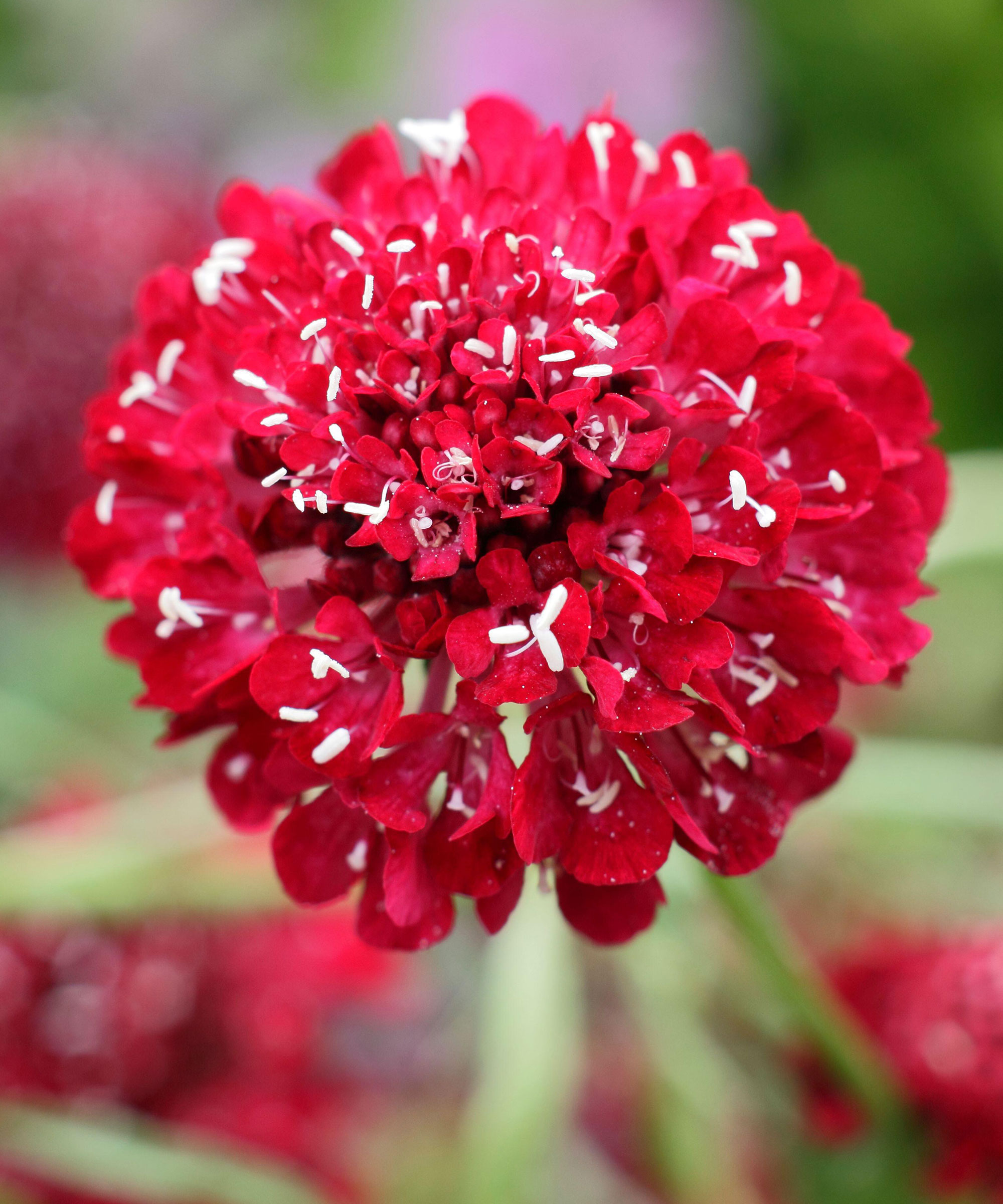How to grow scabiosa – for dancing, detailed flower heads that will add a whimsical touch to any design scheme
With their curvaceous, dancing stems, pincushion flowers play a vital role in garden beds and borders


Scabiosa, also known as pincushion flower, is one of the most delightful perennials in the cottage garden. As a member of the honeysuckle family, it’s native to parts of Europe, Asia and Africa and is adapted to the various climates in those environs. In the US it is hardy in zones 4-9.
With a flowering structure that truly looks like a pincushion, scabiosa playfully bobs its head atop 12- to 30-in tall stalks with the slightest of breezes. Scabiosa blooms begin in late spring in shades of blue, lavender, pink and white. Minimal maintenance is required to keep them looking their best – simply snip passed blooms and they’ll flower through fall. That’s good news for bees, butterflies, moths and other pollinators who rely on their season-long supply of nectar.
If you’re searching for flower bed ideas, whether it’s for a cottage garden, rock garden, or pollinator-friendly landscape, scabiosa is a top contender. Scabiosa is also a popular flower for homegrown floral bouquets. Here, experts provide some ideas for using scabiosa and ways to grow it to its finest.

How to grow scabiosa
Scabiosa is not considered toxic, however, some with sensitive skin may develop an irritation if handled excessively. Historically, scabiosa was used to treat scabies, a skin infestation with which it shares a Latin root word.
It has also been used in different cultures to treat a number of afflictions, including coughs, fevers, open wounds and even the plague.
Growing habits of scabiosa

A handful of the close to 100 species within the Scabiosa genus, Scabiosa atropurpurea and Scabiosa caucasica, are used to develop cultivated varieties for garden use. Some varieties, such as S. caucasica ‘Fama Blue’ are up to 30 in. tall. More compact varieties, such as the S. japonica var. alpina ‘Ritz Blue’ are just 7 in. tall.
Live Scabiosa caucasica ‘Fama Blue’ are available from Amazon.
Design expertise in your inbox – from inspiring decorating ideas and beautiful celebrity homes to practical gardening advice and shopping round-ups.
‘Some of the newer varieties that are coming out are even shorter,’ says Brian Kirkland, Sales Support and Business Development for Border Concepts, a new plant sourcing company based in The Netherlands. ‘These would make nice compact borders at the edge of a planting bed.’
Kirkland also suggests grouping scabiosa of any size in sets of three to five, ‘to make a statement with color in between a low border and the taller plants behind it.’ He advises to keep scabiosa away from the back of a garden bed because it be hidden by taller plants.
Laura Janney, CEO of The Inspired Garden Masterclass, loves to work with scabiosa, moreso the ‘Butterfly Blue’ variety than ‘Pink Mist’. ‘It gives you that dreamy cottage meadowy soft look,’ she says. ‘It’s very hard to get that look in the United States, but scabiosa does really well.’ She appreciates its airy quality and lack of bulk. ‘I love using it as a screen, mixing it in with other plants, and it just looks so beautiful.’
Laura pairs scabiosa with other plants that have a little more bulk or a completely different texture, such as catmint, bee balm, yarrow, Russian sage and coneflower. ‘It’s so soft and subtle, I don’t think you could go wrong,’ Janney says.
Live Scabiosa ‘Butterfly Blue’ plants are available from Burpee.

Laura Janney is a renowned landscape architect and designer, and CEO of The Inspired Garden Masterclass. Laura has left her mark on the cottage garden landscape design scene, recently winning the 2023 Houzz Best in Design award for her work in the New York area.

Brian Kirkland provides sales and business development support for Border Concepts, a new plant sourcing company based in The Netherlands.
Care guide for scabiosa

- Soil: Scabiosa prefers loamy, well-drained soil, both Kirkland and Janney advise.
- Light: ‘It needs at least six hours of full sun,’ Kirkland advises. In Janney’s experience, scabiosa doesn’t do well in intense heat. ‘So maybe if you're in a hot climate, don't put it in afternoon sun,’ she suggests.
- Watering: ‘I just keep it not too wet, not too dry, just water consistently,’ Janney says. Kirkland agrees. ‘The problem you run into with too much water is it ends up getting mildew, in the more humid climates.’ He says in his North Carolina garden the humidity tends to cause root rot in scabiosa. While it’s not completely drought tolerant, Kirkland says you can let scabiosa run dry with no ill effects.
- Fertilizing: Kirkland says a fertilizer with a higher phosphorus percentage will help to encourage blooms, but suggests keeping the overall rates on the low side. A balanced fertilizer should do fine. Balanced fertilizers are available from Walmart.
- Pruning: Janney says keeping up with deadheading spent blooms will keep scabiosa blooming longer.
- Pests and Diseases: ‘Powdery mildew is a major problem, especially in very humid areas,’ Kirkland says. Aphids and spider mites are other issues. ‘Spider mites tend to be a problem for scabiosa when it gets hot and dry,’ he says. It’s also a favorite of deer, in his experience.
FAQs
Can you propagate scabiosa?
According to Kirkland, scabiosa is fairly easy to propagate. ‘You can just divide it and make more plants, and you can propagate it from cuttings, too,’ he says. Janney says she has grown scabiosa from seed, as well. Either way, growing more scabiosa is easy and possible for the home gardener.
Both Janney and Kirkland say scabiosa is a wonder item for containers. ‘I love how it looks in containers, even though it's not going to give that wow factor all summer’ as it produces fewer flowers as the season goes on. Kirkland believes the way scabiosa blooms and reblooms, with the flowers on top of twisty stems, makes for a nice item in a combination pot.
Check out our guide to summer container planting ideas for more ideas on ways to use scabiosa and other flowers with distinctly cottage garden vibes.

Ellen Wells is a horticultural communications consultant with 30 years experience writing about all aspects of the gardening world, and for GardeningKnowHow.com since 2024. She specializes in retail horticulture, vegetable gardening and tropical plants. Ellen is based in southern New England where she gardens in zone 7a.